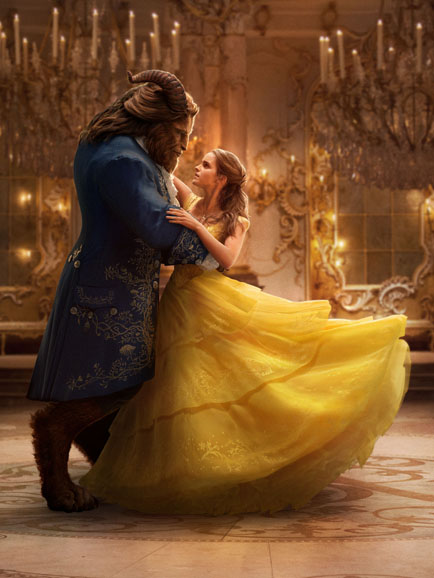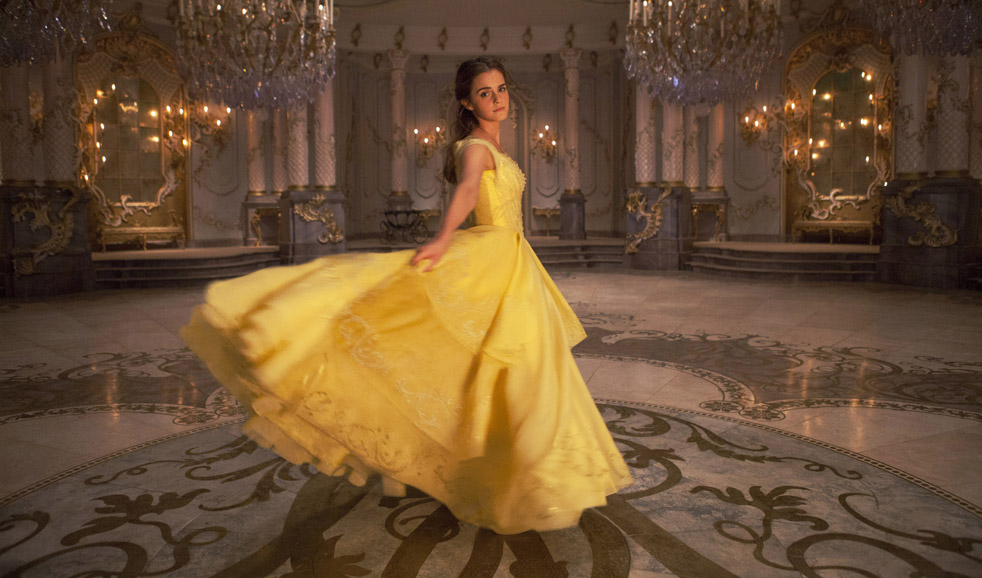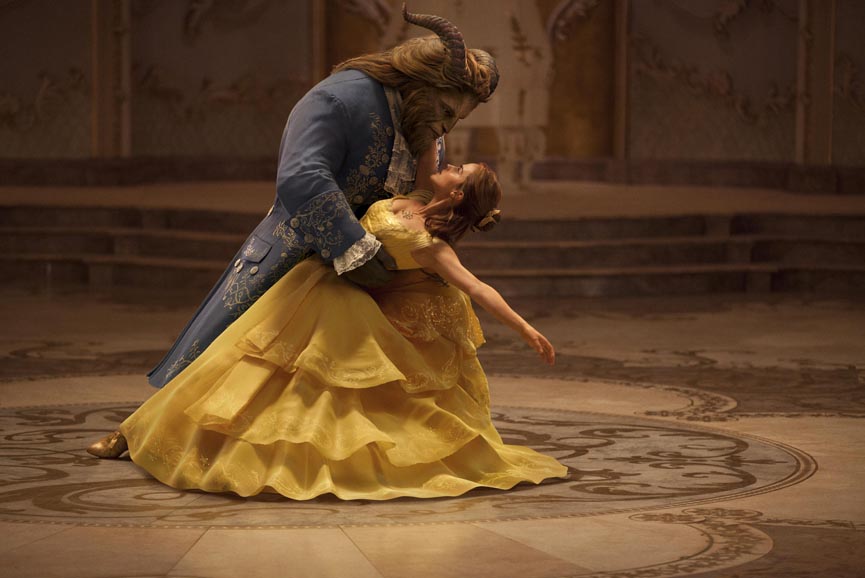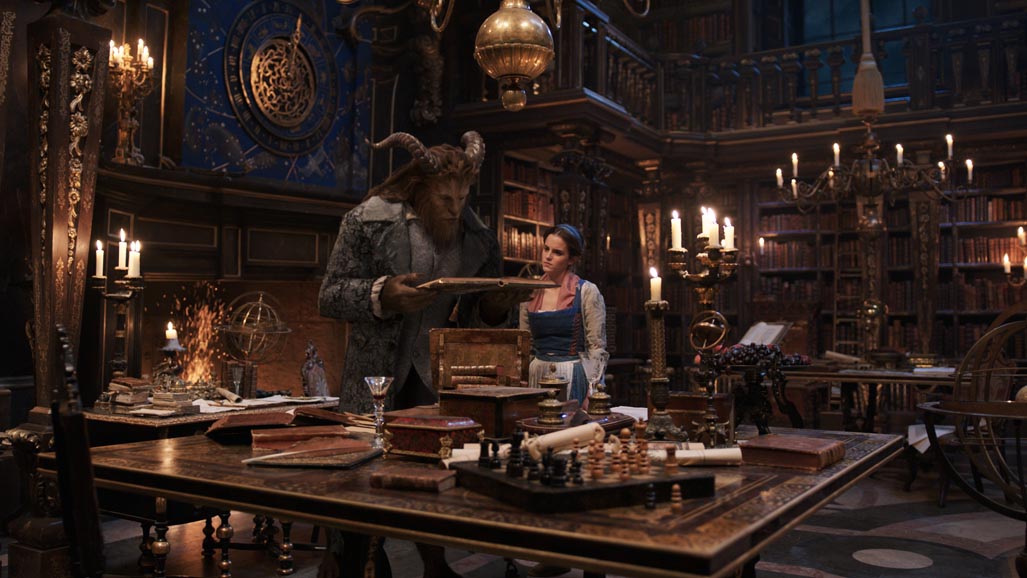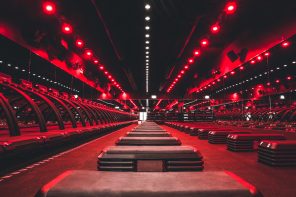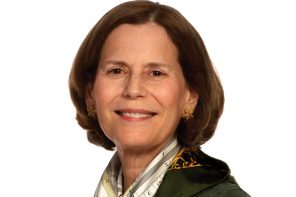Once upon a time — well, actually, about a quarter of a century ago — an animated musical scored by North Salem’s Alan Menken with lyrics by the late Howard Ashman transported Walt Disney Pictures, the animated film and the musical to “adventure in the great, wide somewhere.”
The moving “Beauty and the Beast” (1991), a box office and critical success, would become the first animated film to be nominated for an Oscar for Best Picture. (It won for Best Original Score and for Best Song for the title tune.) Three years later, “Beauty and the Beast” — which was essentially a Broadway show masquerading as an animated film, anyway — became the real deal and a first for Disney, a transcendent theater experience with new songs by Menken and lyricist Tim Rice that darkened but also deepened the film and the ancient story, crystallized in 18th-century France, of an arrogant prince-turned-beast and the beautiful young woman whose love transforms him.
On St. Patrick’s Day, Disney is set to release a live-action remake of the 1991 hit with Emma Watson (“Harry Potter”) as Belle and Dan Stevens (“Downton Abbey”) as the Beast. The film features three new Menken-Rice songs — including “How Does A Moment Last Forever,” sung by Céline Dion over the end titles — and a new character, Cadenza the harpsichord, played by Westchester native Stanley Tucci. (Alas, the movie won’t contain the Broadway version’s breathtaking “If I Can’t Love Her” and the diabolically delicious “Maison des Lunes.”)
But Disney’s protean creation is one of countless novels, plays, stories, operas, ballets, films, TV programs, songs, videos and even video games inspired by the original tale, including a 1987 TV series that served as an ingenious, poignant metaphor for a crime-ridden New York. Why so many? Perhaps because “Beauty and the Beast” says something profound about the relationships of men and women, beauty and love and about the way these play out in the place we call “home.”
The source material — Jeanne-Marie Leprince de Beaumont’s 1756 version of novelist Gabrielle-Suzanne Barbot de Villeneuve’s longer 1740 fairy tale — plays with a theme older than Adam and Eve, women’s fascination with the beast in men, be he the potentially monstrous Eros in the ancient Greeks’ “Eros and Psyche,” the Serpent in the Bible’s Book of Genesis or Bottom the Ass in Shakepeare’s “A Midsummer Night’s Dream.”
Women’s sexuality, fragile yet fierce — remember these stories come out of thousands of years of male storytelling — is not only susceptible to the beast in men (the biblical Eve and the Serpent). It is even capable of transforming men into beasts. (Circe in Homer’s “The Odyssey.”) But women can also tame the beast in men, the storytellers say, by making a home for them in their hearts.
Disney’s “Beauty” streamlines the 18th-century French fairy tale further, modernizing it and giving it a feminist twist that plays with the idea of women as beast makers and masters. The magician who turns the proud, selfish prince into an animal has been replaced in a prologue by a stunning sorceress, who similarly curses the handsome prince with a beastly appearance that can only be reversed by a beautiful woman’s true love. Beauty, now called Belle, is no blond Disney princess but an inventor’s equally eccentric daughter, with brunette curls “and her nose stuck in a book.” (A fellow curly-haired brunette and bookworm, I remember thinking, “Finally.”)
As in the source material, Belle/Beauty agrees reluctantly to go live in the Beast’s castle to save her father’s life, expressing her misgivings in the song “Home.” But this being a fairy tale and a subsequent Disney production, the castle is like a five-star hotel, with everything Belle/Beauty’s heart could desire (the original) and singing, dancing candlesticks, feather dusters, teapots and clocks (Disney). As Belle/Beauty and the Beast gradually warm to each other, Belle finds herself less a guest of enchantment and more a mistress of the Beast’s palace — and heart. If “Beauty” plumbs a classic male fear — of woman as witch and nurturer — it also explores a classic female fantasy — the misunderstood brute who gives her everything she needs and wants, including a fabulous home. (Shades of “Grey,” anyone?)
What makes a place are its people. Belle is torn between the love and life of the mind she had at home with her father and the love and the life of the mind and heart she has found in the home of the Beast. She must save the one first and then the other. But the Beast helps himself by letting her go to her father’s aid, even though it may spell his own doom.
It is the Beast’s selflessness — nurtured by and now worthy of the returning Belle’s true love — that sets him free.

